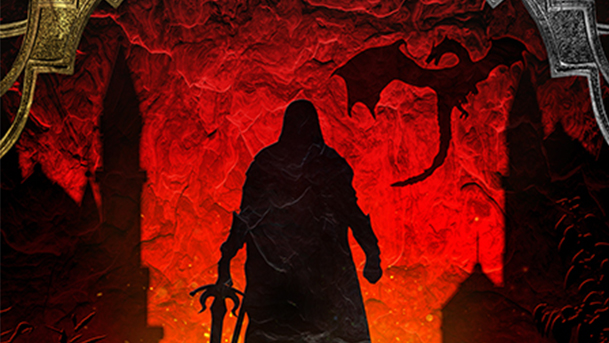Hello there ladies and gentlemen – we are back! After focusing on Tellest for a couple of Wednesdays, we got to missing Otherworld.
Today we make up for lost time. Recently, I was given the opportunity to chat with J. S. Morin, the author of Knight in the Nighttime (nee Firehurler), part of his Twinborn series. He’s found some measure of success with his books, and if you check them out, you’ll certainly see why. In this interview, we found out a little more about what makes the man behind the words tick.
Tellest: Your fight scenes are so eloquently described. How do you go about making sure that everything is presented so precisely?
J. S. Morin: What I want from a fight scene is the sense that the reader is there. The pacing needs to match the scope of the battle and the perspective from which it is viewed. For a character in the thick of the fighting, it needs a fast pace, just enough description that you can believe someone fighting for his life might have noticed it that way, and a sense of chaos. Someone watching from a hilltop sees a slow, plodding encounter, but gets a sense of the nuance of the battle strategy: flanking, charges, retreats, ploys and feints.
T: Goblins play a big part in Knight in the Nighttime. With a race that sits outside of typical humanity, did you find yourself coming up with their backstory, or were they basically fodder first that you assigned some traits to as they were explored?
JSM: I started with the concept of a race that was smarter than humans. If you pay close attention throughout the Twinborn Trilogy, you might notice that the Kadrins aren’t exactly the “good guys.” The humans are the dumb, warmongering brutes. I specifically created the goblins not to be simple cannon fodder that could be killed without much thought. Their dragon-based religion was meant as both a pragmatic approach to theology, and a reason for their lack of expansion.
T: Your characters each have a very distinct way of communicating. Your command over their language and dialect is handled very well. Do you find that challenging, or does it come naturally?
JSM: I can hear them in my head as I go through the scenes. Each character’s dialect should have a certain feel to it, and it’s more of a challenge to transcribe that in a way that conveys the same feel to the reader than it is to come up with it. Education, formality, and local slang all help differentiate one from another.
T: Speaking of language, your magic users deliver their spells alongside these mystical chants. How did you come up with this otherworldly language?
JSM: What I wanted was a sense of something ancient. I intentionally used gibberish (from a real-world perspective) words, but I hoped for a Latin/Hebrew gravitas. Harry Potter had a similar use of spell language, but it was more or less Latin with an English twist. Magic in the twinborn worlds is entirely its own entity. Any resemblance to words real or previously imagined is entirely coincidental.
T: At that point it must feel like developing an entire language all its own. Did you have to make a cheat sheet to recall those chants?
JSM: Cheat sheet, definitely. If there’s one downside to inventing a gibberish magical language, it’s that there’s no safety net to speak of. I don’t want to trust to an editor that I maintained consistent gibberish throughout. Each time I create a spell chant, I save it to a separate file, along with any relevant descriptive text of the gestures that accompany it. From there on, I’ll copy and paste for subsequent usage.
T: With that in mind, do you notice any carry-over from one spell to another? If you were going to see a sorcerer cast a good amount of spells from a particular school of magic, or depend on a certain element, would you see the same base words in the chants, or are they pretty much self-contained?
JSM: There is reuse of syllables, but not of entire words. The exception is when a spell is a minor variant of another; for instance, a spell that transports you, versus a spell that transports someone else. My magic system doesn’t really break down into schools. The spells that have been developed have come into being by thousands of years of trial and error, and there are multiple solutions to the same problem.
T: There is a fine-tuned balance between physical and magical combat. How did you come to this reconciliation of the rough-and-tumble and arcane fighting?
JSM: When I developed my magic system, I defined the agency of the magic as entirely mental. The words, the gestures, it’s all the equivalent of reading out loud. It trains the mind to think very specific thoughts, but the words and gestures themselves are merely a crutch. By logical extension, to work magic you need a clear enough mind to form those mental patters. If you are unable to focus—say by the gentleman charging at you with a sword—then you are liable to make a mistake. The aether you are using to power your spell is going to do something besides what you intended, and you’re storing it within you. Bad things happen.
This is why an empire with powerful sorcerers still needs a huge standing army. Sorcerers can’t just go blasting armies apart. They may have some success at it, but the first time an arrow comes a bit too close during a spell, that might be the end of them.
T: One of the other things you mentioned about the magic system is that the aether, when drawn on incorrectly, could have drastic side effects. When Iridan draws too much, it bites back. Was that inspired by anything particularly?
JSM: Once I had my concept for how magic was going to work in the twinborn worlds, I let everything fall out from there. If you’re drawing in and channeling magical energies, there has to be some element of danger from that. Like wielding a sword or working with caustic chemicals, improper handling ought to be dangerous—humans are fragile. Imagine trying to do complicated mathematics while people are shooting at you.
T: You essentially leveled the playing field. In most fiction and even fantasy games, the magic users are like the gods of the battlefield. Were there any drawbacks to that point of concept?
JSM: Sometimes you read about worlds where every wizard is essentially a howitzer on a medieval battlefield and wonder why the world isn’t a smoking ruin. I suppose some are. But that wasn’t what I was looking for. The Kadrin Empire is old and bloated, dominated by a caste of lazy, bureaucratic sorcerer elites.
For a world-changing, paradigm-shifting force, I created the warlocks. Every so often, a sorcerer is born with a bit of a psychosis, a mis-wired brain that doesn’t panic in the face of mortal peril. Well … then the whole smoking ruin thing comes into play.
T: Your worlds seem to keep expanding as well. Do you have more plans for the magic system to keep evolving in certain ways?
JSM: I’ve worked out more of the magic system than I let on. There is no plan to keep pulling rabbits out of a hat by making up the magic system as I go along, but I haven’t shown everything, either. Everything that shows up, even if it isn’t immediately explicable, fits with the system that’s working in the background.
T: Stepping outside of this single novel, you have a tremendous amount of work already out there, including the second and third books in the Twinborn trilogy. Most of these stories are long form as well. How do you find the time to tell such excellent stories that span so far?
JSM: Well, I’ve been writing full time for over a year now. And it’s a good thing, too, because I’ve had fans chomping at the bit for sequels. There’s more to being a self-published writer than just the writing, and doing it full time is the only way I can do all that and keep up with my self-imposed deadlines.
As for the lengths of my novels, that just sort of … happened. I didn’t go into Knight in the Nighttime with a word count or page count in mind. I wrote the story and worried about those details later. The reason for the length, looking back on it, is the number of perspectives that are explored. It would be a very different—and much shorter—story if I didn’t include the adversarial viewpoints. But at the same time, I think it would have lost part of what made it unique.
T: Your novels have a pretty steady following, and as you said, you’ve been putting these stories out for a bit over a year. A lot of would-be writers find the indie-author identity somewhat challenging. As someone who has found some success at this, what would you recommend to those with aspirations?
JSM: Temper your expectations. I hated hearing that it won’t happen overnight, but it really doesn’t. I think any author our there with less than ten sales a month of their first book, but generally hears good things from those readers, really needs to stick with it. They may just be a sequel or two away from a solid foothold.
The other thing I would suggest is to find ways to put books in people’s hands. It doesn’t matter how many sales you “lose,” because the problem new authors face isn’t sales, it’s readership. For every book you get someone to read, there is a chance you find a true fan, someone who will tell their friends, write reviews, and purchase sequels.
T: And of course a good stroke of writing wouldn’t hurt either. If you could give those storytellers just starting out an idea of how to strengthen their work, what would you tell them?
JSM: Weave your world-building into the background. Mention bits and pieces casually, without stopping to explain. Offhand references and bits of dialogue make learning about a new world fun and enjoyable, compared to paragraphs of info dumping. Resisting the urge to show all the neat things you’ve thought up can be a challenge.
We’re so happy that we had a chance to talk to J.S. Morin about his ever expanding worlds. He’s very knowledgeable about the craft, and it was insightful speaking to him. You can find the novel featured in this interview, Knight in the Nighttime, on Amazon.com. If you’d like to contact the author, or find news on his upcoming works, check out his website: http://www.jsmorin.com/ Thanks again!
If you’re the creator of fantasy worlds and you would like to be interviewed for your work, contact us via the link in the menu bar.
Michael DeAngelo
Latest posts by Michael DeAngelo (see all)
- Fantasy Promo – Quinine - July 25, 2024
- Sigil Art – Grim’s Hold - July 24, 2024
- Fantasy Promo – Light the Shadows (Under Elfhame’s Stars) - July 24, 2024



2 thoughts on “Interview with J. S. Morin”